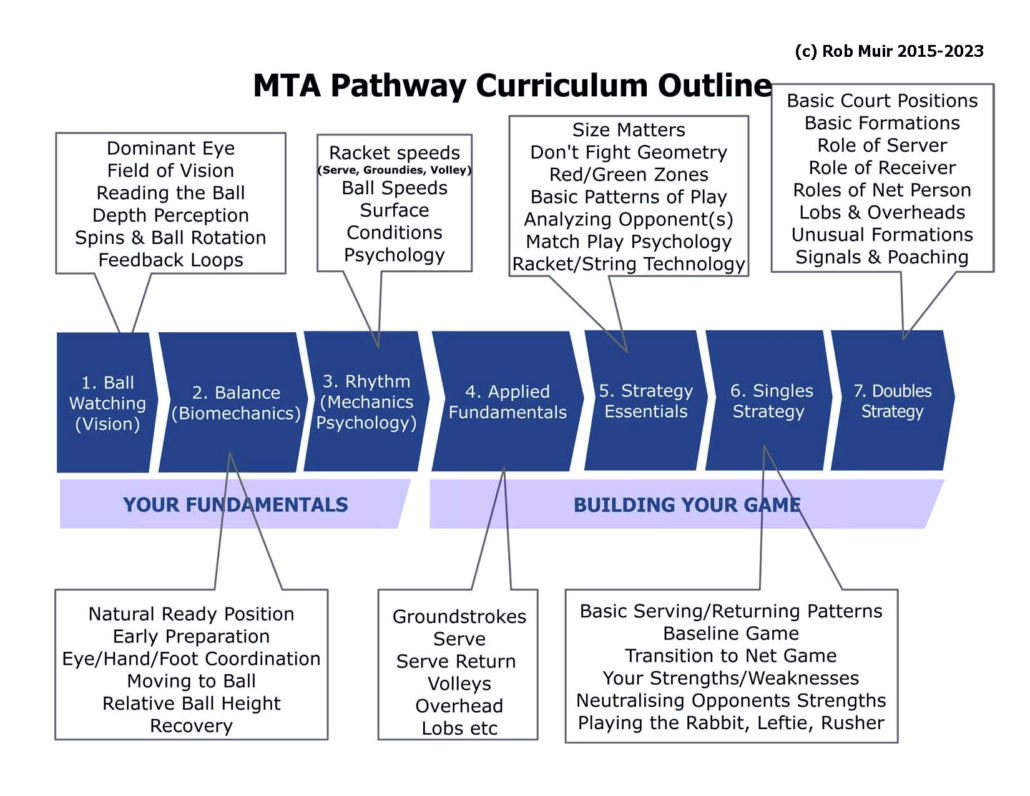What Does it Take to Create an Elite Junior Player?
We were fortunate to watch several promising juniors compete in the Club Championships over the past several weeks. One parent watching the matches asked this week’s question. What Does it Take to Create an Elite Junior Player?
Creating an elite junior tennis player involves a blend of talent, dedication, and a specialized teaching program.
The Muir Tennis Academy (MTA), drawing from years of experience, developed a tennis curriculum that emphasized building on individual strengths. The program was very successful in creating college athletes with the payoff that tennis paid for their education. Some even went on to become College Coaches themselves, one even has his own tennis academy.
The approach mirrored a multiyear academic education, with structured semester programs focusing on seven key elements. The curriculum allowed for tracking a child’s progress and tailoring teaching to their specific needs/strengths, all while incorporating healthy competitive elements.
Here’s a copy of the curriculum.

The curriculum was divided into two main sections: learning the Fundamentals and Building a Game based on the fundamentals. Classes were held biweekly for groups of 6 – 8 players.
1. Fundamentals
- Ball Watching: This involved teaching players about eye-hand coordination and focus, with drills designed to track the ball from the opponent’s racket to their own.
- Balance and Rhythm: The training here included exercises to improve physical coordination, footwork, balance, and rhythm, enhancing agility and court movement.
2. Building A Game
- Applied Fundamentals: This step involved integrating basic skills into more complex drills, combining ball watching and balance with hitting exercises to simulate real-game scenarios.
- Strategy Essentials: Players learned tactical aspects of the game, understanding different shots, their appropriate use, and how to anticipate the opponent’s moves.
- Singles Strategy: The curriculum focused on specific singles play strategies, such as court management, exploiting opponents’ weaknesses, and enhancing serve and return games.
- Doubles Strategy: Emphasized teamwork, positioning, and communication in doubles, teaching effective partnership strategies, including court coverage and shot selection.
This structured approach fostered learning and development, focusing more on the “experience” rather than just winning or achieving high rankings.
At the end of the day, the role of the coach is to help develop a ‘good person’ with life skills. If they happen to become an elite tennis player too, that’s a bonus. Good luck.
Rob Muir
USPTA
Tennis Whisperer


